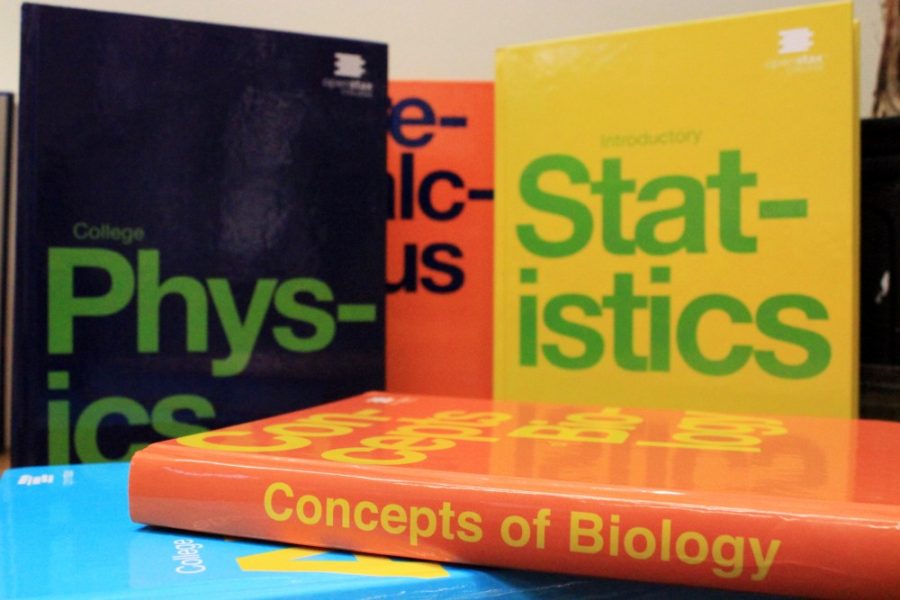The UA has started an Open Educational Resources initiative to combat the rising costs of textbooks.
Open Educational Resources are resources that are in the public domain, usually with an open license that allows anyone to use and adapt them. They’re an often peer-reviewed, free or significantly cheaper alternative to traditional, commercial textbooks.
In a 2014 U.S. PIRG survey, 65 percent of college students surveyed said they had decided not to purchase at least one textbook due to cost factors. Additionally, a 2016 U.S. PIRG study found that new textbook prices have grown 73 percent over the last ten years.
READ: UA’s Navy ROTC tours new USS Arizona exhibit
These findings combine to form a financial situation that students can find hard to handle.
Lieren Hefner, a speech language and hearing sciences junior, spent $350 on textbooks this semester and didn’t even buy all of them — she said that if she had, she would’ve paid more around $500.
“We’re already paying so much for tuition, and then books on top?” Hefner said. “I feel like I need to get them before school starts and then we barely use them. I’d rather go online anyways.”
Cheryl Cuillier is an associate librarian and UA’s OER coordinator. She helped the UA become part of a 2013-2014 open textbook pilot program and now works with the Office of Instruction and Assessment, UA Bookstores, the Office of Digital Learning, University Information Technology Services, the Disability Resource Center and the Associated Students of the University of Arizona to promote the use of OER.
READ: UA creates new directory to further display the history
Cuillier said that most OERs are high quality, have a lot of flexibility and are very customizable by faculty.
The UA offers an open text adoption workshop for faculty to help them learn about OER and answer any questions and concerns they may have about the program. Last year, 25 faculty members attended. Cuillier is hoping the same number show up this year.
Awareness is the biggest obstacle right now, Cuillier said, with access following just behind it.
There’s currently no central repository for OER, and since many open-source textbooks are funded by grants, they tend to focus more on large enrollment classes — not smaller, more specific subjects..
But the UA just added over 250 open text books to the library catalog, making them easier for faculty to look up. Cuillier is hoping this change will remove one barrier to access.
Cuillier said it’s unlikely there will be open texts for every subject in the world, and, furthermore, UA will always have a place for commercial textbooks. She still wants to spread the word about the world of open textbooks to as many faculty members possible.
“They have complete academic freedom [in choosing a textbook] … this is just one option for them,” Cuillier said.
Chris Impey, an astronomy professor who stopped using a traditional textbook 10 years ago, said he has been on all three sides of the textbook situation, as an instructor, an author and as a person buying the books. He called the current system a classic negative feedback loop in which something has to give.
“I guess someone is getting a lot of money off this, and it’s not me,” Impey said.
According to the 2014 PIRG Study, five publishing companies control more than 80 percent of the textbook market, meaning they’re the ones reaping the monetary benefits.
Even with that view, Impey thinks the current textbook model is unsustainable, since the faculty members who chose the books are not the ones “feeling the pain” of paying for them. He pointed to sources like Wikipedia as another possibility, one that students are already using, especially if they choose not to buy a textbook.
“Most kids, when they want to learn something, it’s their first stop, and sometimes their last stop,” Impey said. “Most of the content is pretty good and super current.”
Alexander Osborn, an electrical engineering junior, turned to internet textbooks when he found print prices to be too high. Osbron rented all his textbooks from Amazon this semester for $50, which he said would have equated to a $250 total at the bookstore.
“It’s the cheapest and easiest way I found,” Osborn said. “In electrical engineering, there are a lot of big books.”
His aversion to buying books started his freshman year, when he bought a custom UA unbound book at the Bookstore, only to find a PDF of the book online that matched it exactly.
“The only thing custom about it is the label,” Osborn said.
Cuillier said that while textbooks are expensive, the bookstore isn’t trying to gouge students.
“The bookstore has been an awesome partner,” Cuillier said. “They do everything they can. UA bookstores are kind of legendary in the bookstore world.”
Follow Marissa Heffernan on Twitter.








